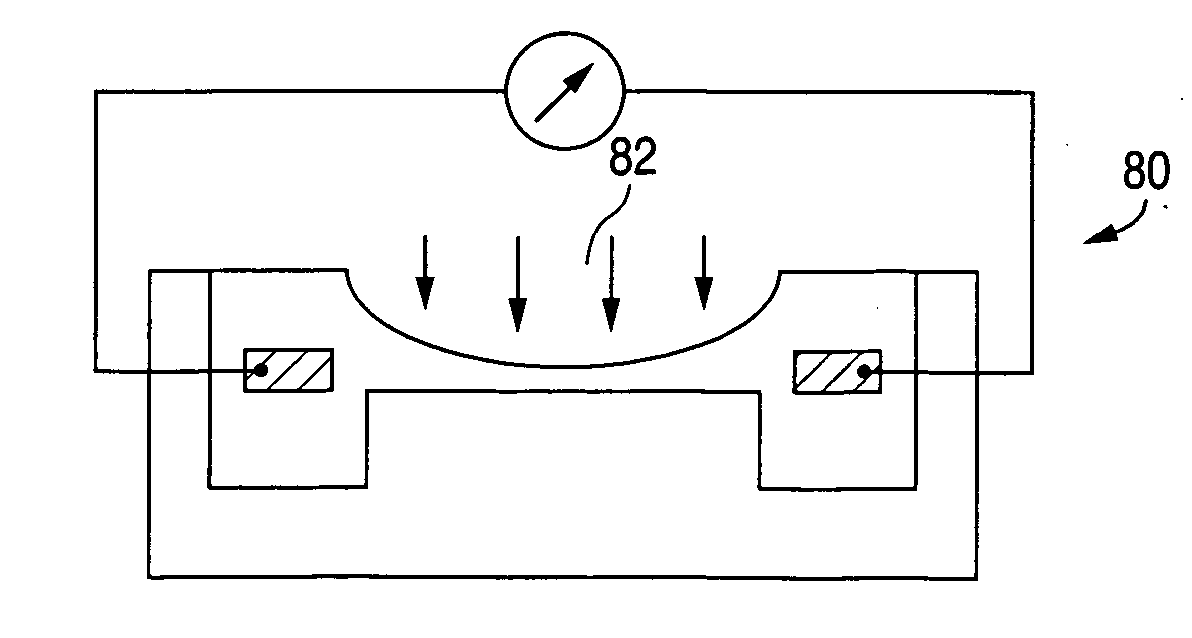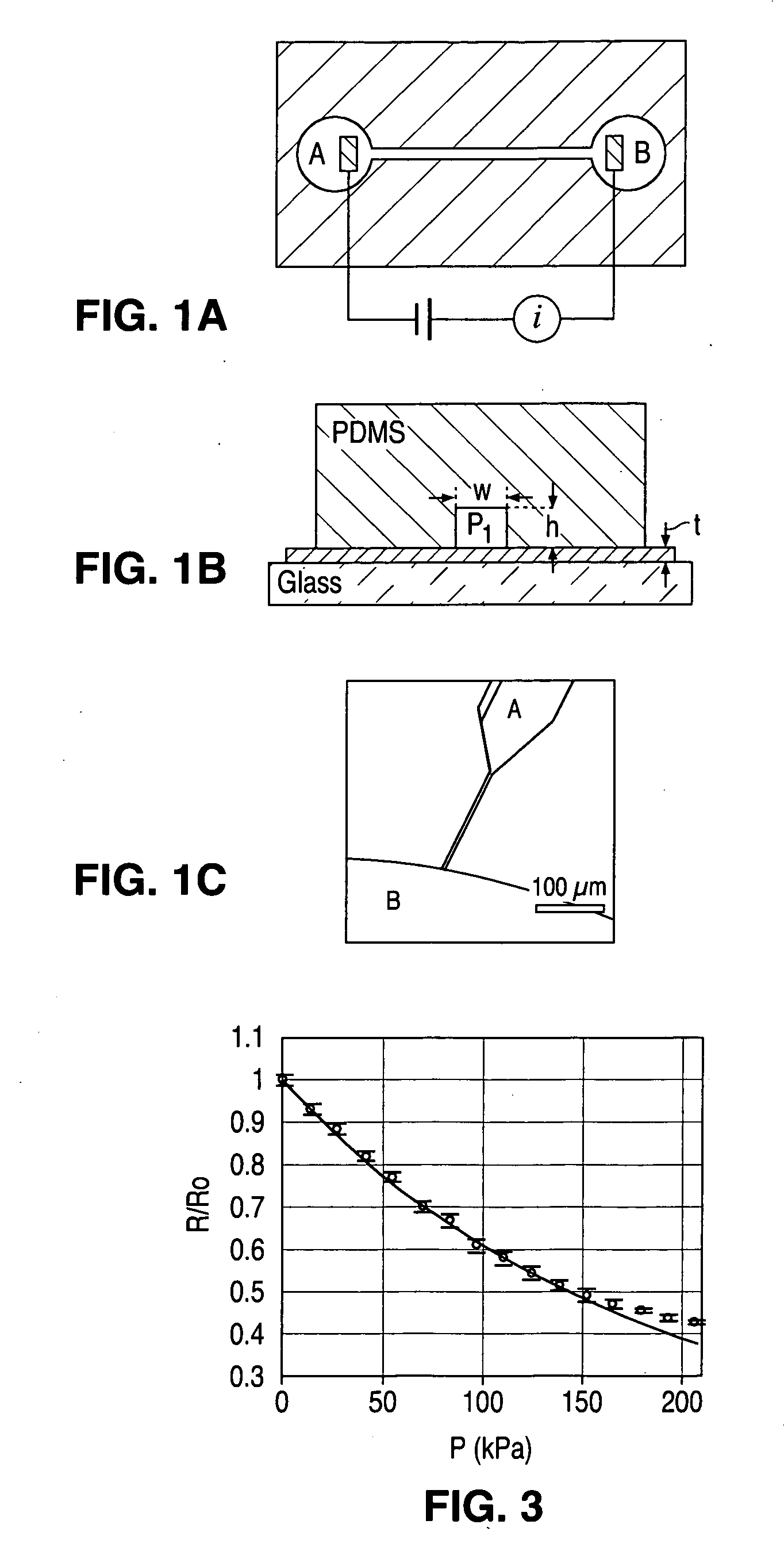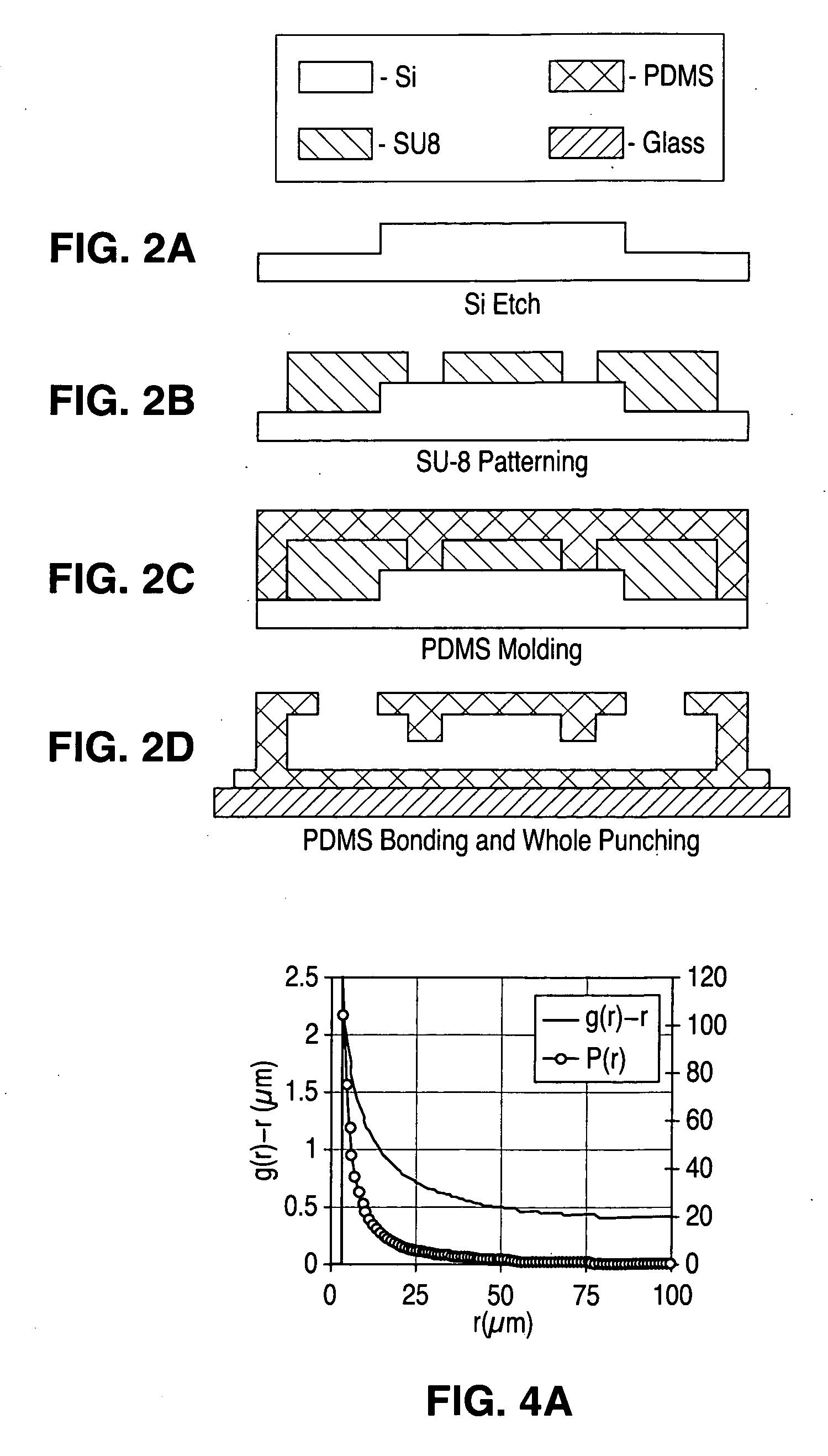Apparatus and method for sensing pressure utilizing a deformable cavity
a deformable cavity and apparatus technology, applied in the field of apparatus and method for sensing pressure, can solve the problems of large sensor area, nonlinear sensor response, unsuitable many-purpose technology, etc., and achieve the effects of low profile, high sensitivity and simple fabrication
- Summary
- Abstract
- Description
- Claims
- Application Information
AI Technical Summary
Benefits of technology
Problems solved by technology
Method used
Image
Examples
Embodiment Construction
[0029] The following description is provided to enable any person skilled in the art to make and use the invention and sets forth the best modes contemplated by the inventor for carrying out the invention. Various modifications, however, will remain readily apparent to those skilled in the art. Any and all such modifications, equivalents and alternatives are intended to fall within the spirit and scope of the present invention.
[0030] In general, the present invention is a pressure sensor that is based on a new transduction mechanism, i.e. the variation of conductivity through a fluid that is contained in a deformable cavity. One embodiment of this concept is fabricated by elastomer micromolding. The structure is very inexpensive to fabricate and can easily be integrated with existing elastomer microfluidic devices. Elastomer (i.e. PDMS) channels deform when pressure is applied to either the inside of the channel or to the outside of the channel walls. If the channel is filled with ...
PUM
 Login to View More
Login to View More Abstract
Description
Claims
Application Information
 Login to View More
Login to View More - R&D
- Intellectual Property
- Life Sciences
- Materials
- Tech Scout
- Unparalleled Data Quality
- Higher Quality Content
- 60% Fewer Hallucinations
Browse by: Latest US Patents, China's latest patents, Technical Efficacy Thesaurus, Application Domain, Technology Topic, Popular Technical Reports.
© 2025 PatSnap. All rights reserved.Legal|Privacy policy|Modern Slavery Act Transparency Statement|Sitemap|About US| Contact US: help@patsnap.com



